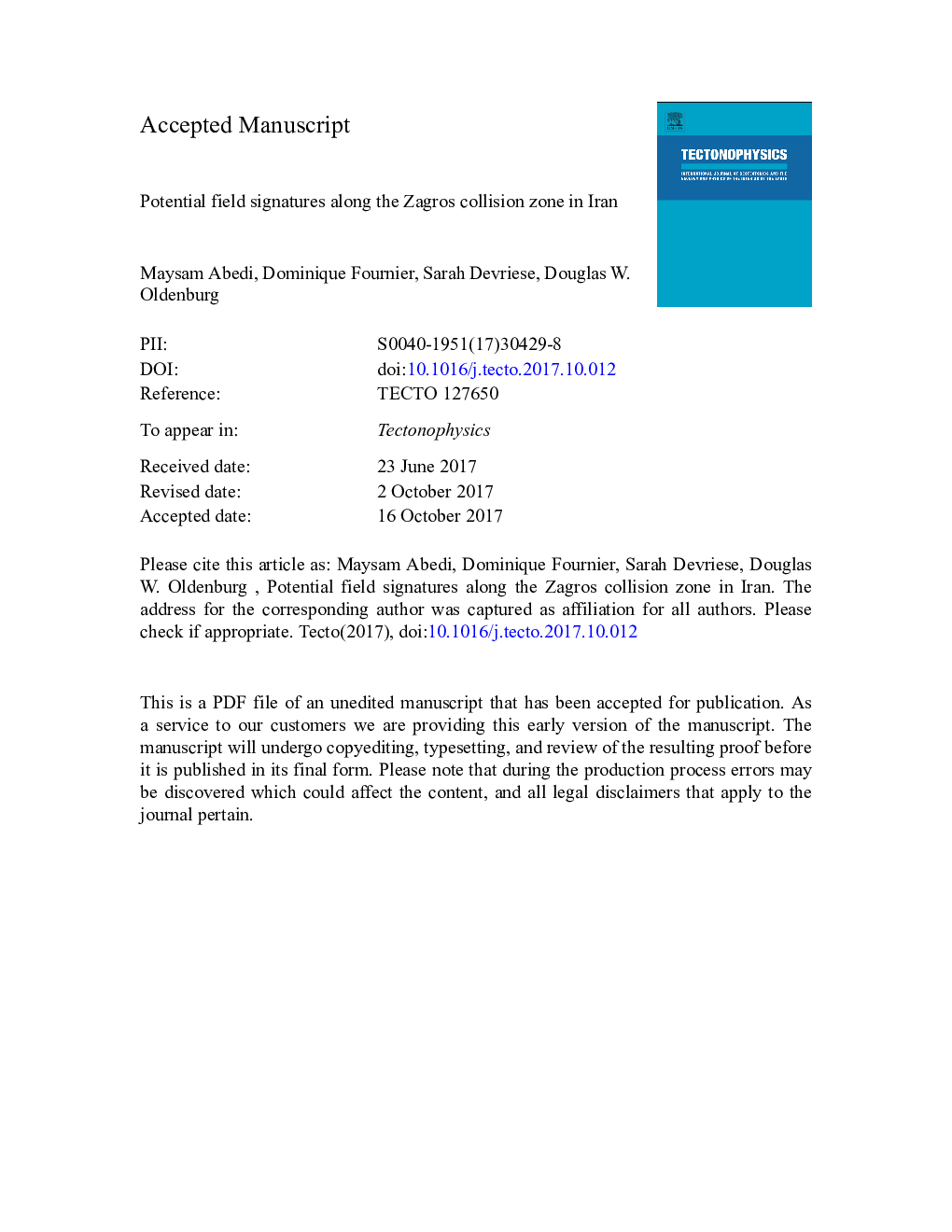| کد مقاله | کد نشریه | سال انتشار | مقاله انگلیسی | نسخه تمام متن |
|---|---|---|---|---|
| 8908805 | 1636687 | 2018 | 53 صفحه PDF | دانلود رایگان |
عنوان انگلیسی مقاله ISI
Potential field signatures along the Zagros collision zone in Iran
ترجمه فارسی عنوان
امضاهای میدان بالقوه در امتداد زاگرس در منطقه برخورد در ایران
دانلود مقاله + سفارش ترجمه
دانلود مقاله ISI انگلیسی
رایگان برای ایرانیان
کلمات کلیدی
اطلاعات میدان های بالقوه، مدل سازی معکوس، منطقه برخورد زاگرس، تکتونیکی،
موضوعات مرتبط
مهندسی و علوم پایه
علوم زمین و سیارات
فرآیندهای سطح زمین
چکیده انگلیسی
The Zagros orogenic belt, known as an active fold-thrust belt, was formed in southwestern Iran due to the convergence of the Arabian and Eurasian plates. In this study, potential field data are inverted in 3D to image the variations of magnetic susceptibility and density contrast along the collision zone, resulting in better tectonic understanding of the studied region. Geophysical data measured by airborne magnetic and ground-based gravity systems are used to construct an integrated model that facilitates the interpretations of various tectonic zones across a 450-km line. This line intersects the main structural units from the SW portion of the Zagros belt. The constructed model reveals a contrast that indicates the transition between the two continental plates coinciding with the western boundaries of the Sanandaj-Sirjan Zone (SSZ) at the Main Zagros Thrust (MZT) fault. The subduction of the Arabian continental crust below the Iranian one is evident because of its lower susceptibility property and alternating sequence of high and low density regions. Higher susceptibility, magnetic remanence and density are the mainstays of the Urumieh-Dokhtar Magmatic Assemblage (UDMA) zone at the NE of the studied route, whereas lower values of these properties correspond to (1) the thin massive Tertiary-Neogene and Quaternary sediments of the central domain (CD) zone, and (2) the thick sedimentary and salt intrusion cover over the Zagros Fold-and-Thrust belt (ZFTB). Higher density of regions in the Arabian crust below the ZFTB implies that fault activities have caused significant vertical displacement of the basement. Finally, a simplified geological model is presented based upon the inversions of the geophysical data, in which the main geological units are divided along the studied route.
ناشر
Database: Elsevier - ScienceDirect (ساینس دایرکت)
Journal: Tectonophysics - Volume 722, 2 January 2018, Pages 25-42
Journal: Tectonophysics - Volume 722, 2 January 2018, Pages 25-42
نویسندگان
Maysam Abedi, Dominique Fournier, Sarah G.R. Devriese, Douglas W. Oldenburg,
